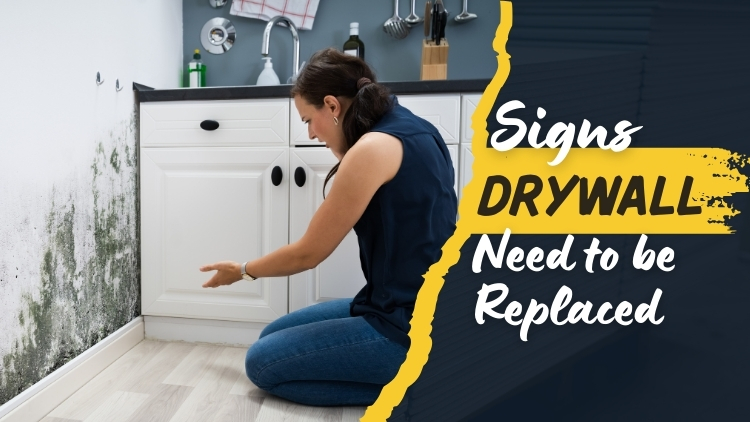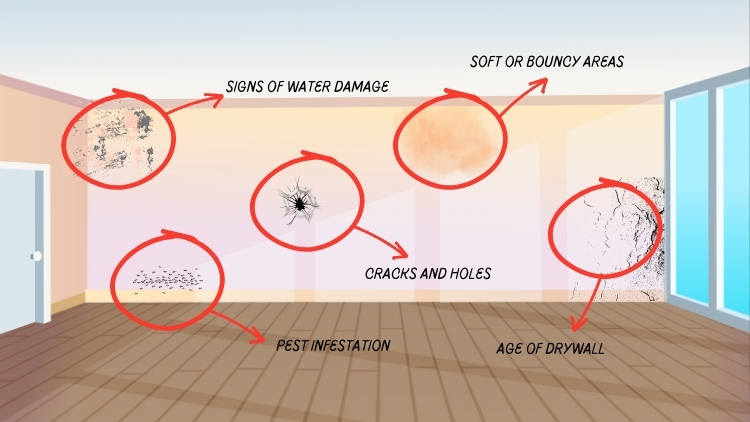We offer a wide range of services for that fresh look, or just maintenance or updates to keep your home functioning and safe. Regardless of the size of the job, we have a craftsman that can tackle it. We offer a wide range of services for that fresh look, or just maintenance or updates to keep your home functioning and safe. Regardless of the size of the job, we have a craftsman that can tackle it.

Drywall / October 11, 2024

the condition of our drywall is crucial. Durable drywall not only supports the structural integrity of a room but also enhances its overall appearance. Over time, drywall can experience wear and tear due to moisture, impacts, or general aging, leading to unsightly cracks, holes, or mould growth. These issues can detract from your home’s beauty and pose safety concerns, which is why we at Handyman Connection see the importance of addressing drywall problems promptly.
Understanding when to replace versus opting for drywall repair services in Halton is essential for homeowners. While minor damages can often be patched or repaired, certain conditions—such as extensive water damage or significant structural compromises—require a full replacement to ensure safety and longevity. By recognizing the signs that indicate your drywall needs replacing, we can help you make informed decisions that protect your home and investment for years to come.
Knowing when to replace drywall is crucial for maintaining a safe and attractive home. Various signs can indicate the need for replacement, from visible damage to underlying issues that compromise structural integrity. In the following sections, we will explore how to identify these warning signs, ensuring you can take timely action to protect your investment.
One of the most common indicators that your drywall has suffered water damage is visible discolouration. This can appear as yellow, brown, or gray stains that spread across the surface, often indicating that moisture has penetrated through the drywall. These stains may start as small spots but can rapidly expand if left untreated, signalling ongoing leaks from plumbing or roofs. Additionally, sagging drywall is another critical sign to watch for. If it begins to bulge or sag, especially in areas directly under a leak or plumbing fixture, it often means that the material has absorbed significant moisture, weakening its structural integrity.
Furthermore, mould growth is a particularly concerning indicator of water damage. If you notice black, green, or white patches on the surface of your drywall, this not only suggests excess moisture but also poses serious health risks. Mould thrives in damp conditions, and its presence can lead to respiratory issues and allergic reactions. If you observe any of these signs—discolouration, sagging, or mould growth—it’s essential to address the root cause of the moisture and consider professional assessment or repair to prevent further damage and potential health hazards in your home.
Cracks and holes in drywall can range from minor imperfections to signs of serious structural problems. Minor cracks, often found in the joints or seams, are usually caused by normal settling of the house and can typically be repaired without significant concern. These types of cracks, often described as hairline cracks, may appear over time but do not usually compromise the integrity of the drywall or the home itself.
However, larger cracks—especially those wider than a quarter inch—can indicate more serious issues. These significant cracks may result from shifting foundations, improper installation, or water damage. If you notice cracks that run diagonally from corners or exhibit a noticeable gap, this could suggest a structural problem requiring immediate attention.
Holes can also pose a dilemma; small holes from nail or screw removal are generally easy to patch. Conversely, larger holes—such as those caused by impact or excessive wear—might indicate damage that extends beyond the drywall itself. If large sections of drywall are damaged or weakened, it may be necessary to replace the affected area completely to maintain safety and aesthetic appeal. Regular inspections can help you identify and address these issues early, ensuring your home remains safe and structurally sound.
Identifying soft or bouncy areas in drywall is essential for determining the structural integrity of your walls. Start by gently pressing your fingers against the drywall surface in various spots. Healthy drywall feels solid and firm. If you encounter areas that feel soft, spongy, or give way under light pressure, this is a clear indication that the drywall has been compromised, usually due to moisture infiltration or water damage.
These weak spots may not be immediately visible but can often be detected by sound as well. When you tap the surface with your knuckles, a hollow sound may resonate from compromised areas, unlike the solid sound that comes from intact drywall. Such soft patches can signal that the material has absorbed moisture to a point where its structural properties are weakened. This can lead to further damage if not addressed quickly.
If you discover soft or bouncy areas, it is crucial to investigate the source of the moisture and consider a professional evaluation. Addressing these issues promptly will help prevent additional damage or health hazards, ensuring a safe and stable environment in your home.

Pest infestations can be a hidden threat to the integrity of your drywall, particularly when it comes to common culprits like termites. These small but destructive insects feed on wood, which can directly impact the structural elements behind your drywall. As termites tunnel through wooden framing, they weaken the support that holds up the drywall, potentially causing it to sag or even collapse. This can create gaps and holes that not only compromise the appearance of your walls but also expose your home to moisture and other pests.
Additionally, the presence of pests can lead to unhygienic conditions within your walls. Termite colonies can produce droppings and other debris that may accumulate in hidden spaces, resulting in unpleasant odours and possible mould growth. If you suspect a pest infestation, it is essential to act promptly. A thorough inspection by a pest control professional can help identify the problem and determine the best course of action, which may include replacing affected drywall. By addressing pest issues quickly, you can maintain a safe and healthy living environment while protecting your home from further damage.
The age of drywall can significantly influence its integrity and performance, particularly in older homes. Generally, drywall has a lifespan of about 30 to 50 years, depending on the quality of installation, environmental conditions, and exposure to moisture. As drywall ages, it becomes more susceptible to wear and tear, which can manifest in cracks, holes, and other damage that may compromise its structural soundness.
In homes built decades ago, the materials used might not meet today’s standards, and the drywall may lack modern treatments that resist moisture and pests. If you notice any signs of damage—such as sagging, discolouration, or soft areas—it could be a sign that the drywall is reaching the end of its useful life. Additionally, older drywall may not offer the same level of insulation or soundproofing as newer products, leading to increased energy costs or noise disturbances.
If your home is over 30 years old, it’s wise to conduct regular inspections and consider upgrading any deteriorating drywall. This proactive approach can enhance safety, improve energy efficiency, and help maintain the overall aesthetic quality of your living space.
Maintaining the integrity of drywall is essential for a safe and comfortable home. By being aware of the signs of deterioration—such as cracks, soft areas, pest infestations, and the age of your drywall—you can take proactive steps to address potential issues before they escalate. Regular inspections and timely repairs not only protect the structure of your home but also enhance its aesthetic appeal and energy efficiency.At Handyman Connection, we understand the importance of quality drywall repair and installation services in Halton. Our skilled professionals are equipped to evaluate and resolve any drywall-related concerns you may have. We pride ourselves on delivering reliable and efficient service, ensuring your home remains a safe haven for your family. If you need expert assistance, don’t hesitate to reach out. Contact us today and let our experienced handyman in Halton take care of your drywall needs to provide you with peace of mind and confidence in your home’s condition.